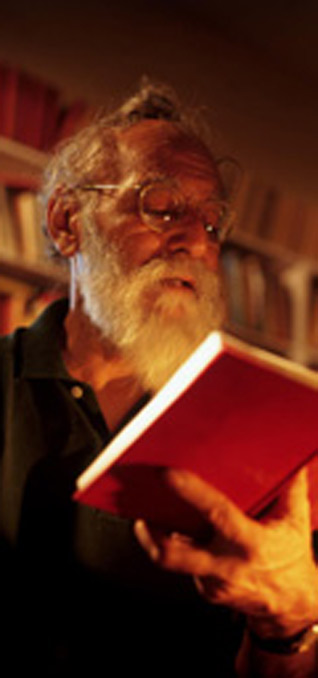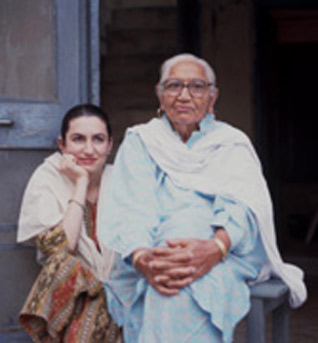Film/Stage
Hofstra University Holds Conference on Sikh Literature & Film
SIMRAN JEET SINGH
Last week, Hofstra University hosted the second presidential debate between President Barack Obama and Governor Mitt Romney.
This past weekend, Hofstra University hosted another major event – an academic conference entitled "Sikhi[sm], Literature and Film," under the aegis of the Sardarni Kuljit Kaur Bindra Chair in Sikh Studies.
It opened Friday evening (October 19, 2012) with a keynote lecture by Dr. Nikhil Pal Singh of New York University entitled "The Remainders of White Supremacy: Reflections on Oak Creek."
In his address, Dr. Nikhil Pal Singh discussed the events of Oak Creek in the context of America’s long history of racism, and he challenged the popular assertion that we live in a post-racial society. He briefly walked through examples of violence and racism in America, with reference to prominent figures such as Thomas Jefferson and Frederick Douglass, and he asserted that race is a social construction that creates fractures within civil societies. He then pointed to the examples of Balbir Singh Sodhi and Oak Creek to suggest that the same structures and processes shaping group identities continue to operate within modern-day America.
He also argued that the modern racism draws upon histories of racial signification and have been codified by law.
The convener of the conference, Professor Balbinder Singh Bhogal -- who is also Hofstra University's Chair of Sikh Studies -- illuminated these comments by pointing out that we would be wrong to simply blame Wade Michael Page for the violence, and he argued that we must reflect on broader social conditions that cultivated this event. Dr Balbinder Singh pointed to colonialism, imperialism, and neo-colonialism as broader practices of domination and power relations that require critique and reconsideration.
Saturday and Sunday (Oct 20 and 21) primarily consisted of academic panels that focused on topics related to literary genres and visual cultures.
In the first panel, Dr. Raj Kumar Hans of the University of Baroda in Gujarat, India, presented his work on an interesting text entitled Sri Guru Katha composed by Bhai Jaita (i.e., Bhai Jivan Singh). Dr. Hans places this text in the 1690s and believes that this is the first historical document that refers to the adoption of the Sikh identity, including the punj kakkaar (5 Ks) and the dastaar (turban). He also argued that this text is the first available text composed by a Khalsa Sikh, and he speculated that the text has been neglected because of its "low-caste" provenance.
Other Saturday panels featured a wider variety of papers relating to literature, politics, and fine arts.
On Saturday evening, conference attendees were treated to the work of two documentarians.
Safina Kaur Uberoi spoke to and showed clips from two of her documentaries, Who Do You Think You Are, Meera Syal? and My Mother India. The first film narrated a woman’s return to her village in Punjab and her discovery of her family’s rich history of participating in social justice efforts, particularly in the Jaito Morchas during the struggle for gurdwara reform as well as independence in the early 20th century.
Harjant Singh Gill of Towson University screened his film – Roots of Love – which discussed the phenomenon of Sikh males in Punjab who have been opting to abandon their turbans and cut their hair. Harjant’s film was incredibly powerful, especially in its ability to capture the deep emotions of love and pain that makeup the relationship between Sikhs and their unshorn hair.
The discussions following the films were quite lively, and a number of audience members expressed their discomfort with specific scenes as well as some of the ideas expressed by subjects of the documentary. One audience member openly wondered why there are no works that consider the Sikh identity from a “joyous and more positive perspective,” and
another audience member asked why women are so often left out in our discussions of Sikh identity.
The conference resumed Sunday morning with two panels entitled “Film, Cinema, & Internet” and “Internet & Music.” The papers presented in these sessions were especially interesting as they dealt with diverse representations of Sikhs in the media, as well as the ways in which Sikhs have participated in different media.
For example, Dr. Geetanjali Singh Chanda of Yale University discussed various issues encountered in the production and circulation of “Amu,” a 2005 film directed by Shonali Bose.
Natasha Raheja of New York University analyzed the viral video of “The Warriors of Goja,” a group of young Sikh males who won the televised Indian talent show “Adhurs” earlier this year.
Three other papers dealt with Sikh musical expressions, specifically as they relate to traditions of kirtan, dhadhi, and hip-hop.
Overall, the conference was a great success that drew a spectrum of scholars from diverse backgrounds. Presenters came from a variety of disciplines, institutions, and geographical locations, and their diverse perspectives helped enrich the conversation throughout the weekend. A handful of students from Hofstra University and some members the local Sikh community also attended the events, and those who did remained engaged throughout the weekend.
The thought-provoking presentations stimulated sustained conversations throughout the weekend, and I left the conference with a number of new friends, thoughts, and questions. From my perspective, these are the hallmarks of a successful academic conference.
PROGRAM
PUBLIC LECTURE ON OAK CREEK KILLINGS
Registration and Light Refreshments
Opening and Inauguration
Introduction to the Conference and the Public Lecture: Dr. Balbinder Singh Bhogal
Dr. Nikhil Pal Singh (New York University)
THE REMAINDERS OF WHITE SUPREMACY: REFLECTIONS ON OAK CREEK
First Response: Dr. Ann Burlein (Hofstra University)
Second Response: Dr. Arvind-pal Singh Mandair (University of Michigan)
Q&A
LITERARY GENRES
Dr. Balbinder Singh Bhogal (Introduction)
Panel 1: NARRATIVE & HISTORY — Chair: Dr. Arvind Singh Mandair
SIMRAN JEET SINGH (Columbia Univ) –
De-categorizing Sikh Literature: Of Genres and Janamsakhis
Dr. RAJ KUMAR HANS (Univ of Baroda, Gujarat) –
Bhai Jaita’s epic Sri Gur Katha: a New Milestone in Sikh Literature
Dr. ARVIND SINGH MANDAIR (Uni of Michigan) — Beyond Secular Apologetics
Respondent: Harjeet Grewal
Open Discussion
Panel 2: DIASPORA & POLITICS — Chair: Dr. Raj Kumar Hans
NAJNIN ISLAM (Jadavpur University and UPenn) – History and Fiction in Shauna Singh Baldwin
Dr. PARVINDER MEHTA (Davenport Univ) –
Framing Sikhs as Other Literary Representations & Discursive Limits
Dr. ANNE MURPHY (UBC) – The Past and Present of the Diasporic Subject
Respondent: Dr. Michael Nijhawan
Open Discussion
VISUAL CULTURES
Panel 3: DASTAR & FINE ARTS — Chair: Dr Geetanjali S Chanda
Dr. HARJANT SINGH GILL (Towson University) –
Masculinity, Migration and Shifting Meanings of the Sikh Hair and Turban in Contemporary Punjab
Dr. GUNJEET AURORA (Ambedkar Univ, Delhi) – Punjabi Theatre Spaces Icons Cultures
SATWINDER KAUR BAINS (Univ of Fraser Valley, BC) – Visual Cultures Museum Exhibitions
Respondent: Dr. Anne Murphy
Open Discussion
PUBLIC LECTURE & FILM SCREENING
Dr. Michael Nijhawan: Introduction to the KEYNOTE (5:40) SAFINA UBEROI
Dr. Geetanjali S Chanda: Introduction to the Public Event (6:40) Film: Screening: Roots of Love (26 mins)
Safina Uberoi in conversation with Dr. HARJANT SINGH GILL – moderated by Dr. Geetanjali S Chanda
Dr. Balbinder Singh Bhogal (Announcements)
Panel 4: FILM, CINEMA & INTERNET — Chair: Dr. Gunjeet Aurora
Dr. GEETANJALI SINGH CHANDA (Yale Univ) – Recognition and Rejection of Sikh Identity in Film
Dr. ANJALI ROY (IIT) – Representation of Sikhs in Bollywood Cinema
NATASHA RAHEJA (NYU) – The Warriors of Goja: Pains and Pleasures of the Sikh (Male) Body
BIJAY MEHTA (Calcutta Uni) – Analyzing Punjabi Rap & Hip-Hop as new Expressions of Punjabi Youth
Respondent: Dr Raj Kumar Hans
Open Discussion
LUNCH
Panel 5: INTERNET & MUSIC — Chair: Dr. Michael Nijhawan
HARJEET GREWAL (Univ of Michigan) – Hip Hop Vaar
Dr. FRANCESCA CASSIO –
Female voices in Gurbani Sangeet & influence of media on the contemporary tradition
Respondent: Dr. Anjali Roy
Open Discussion
Closing Reactions by Punnu Jaitla (UofM)
Publication Possibilities
October 22, 2012
Conversation about this article
1: Harjap Singh Aujla (Monmouth Junction, New Jersey, USA), October 25, 2012, 7:04 PM.
This was a commendable attempt at scholarship on Sikh issues. I am sorry to have miss it due to some other engagements. I appreciate the spirit and resources behind it.




